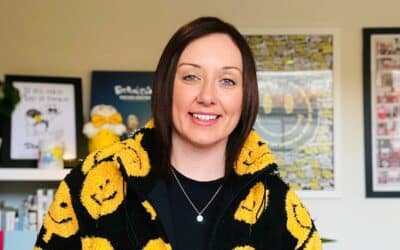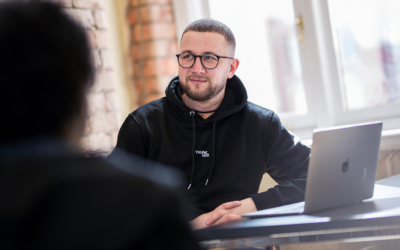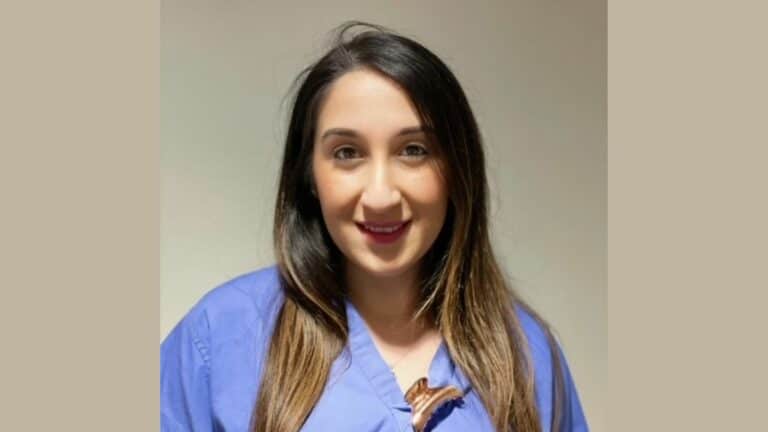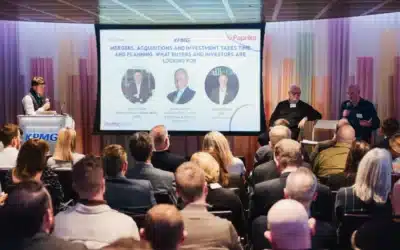Headquartered in Sheffield, Digital Autopsy UK is a unique healthtech company which provides a digital autopsy service for bereaved families.
Formerly known as iGene London Limited, following a management takeover in 2022 Digital Autopsy UK took over all contracts and operations and uses its own propriety imaging software for use with a CT scanner to help determine cause of death and avoid the need for an invasive post mortem.
With multiple sites across the North including in Sheffield and Lancashire, each Digital Autopsy facility is entirely funded by the company and is equipped with a team of skilled radiologists – including Alhamna Jabin, a CTPM radiographer.
She has been a radiographer since 2020, now specialising in forensic work. In what must be an emotionally challenging but important role, Jabin shares a recent week in her working life…
Monday
My job requires me to be at my desk between 7-7:15am so I arrive at work early with a coffee to wake me up whilst the machines warm up.
For those unfamiliar with what a digital autopsy is, we use Computerised Tomography (CT) images to establish the cause of death in the deceased. We deal with a variety of different cases across the Sheffield City Region and no two cases or days are the same.
Whilst the mere mention of post-mortem examinations may evoke sombre feelings, I have come to appreciate the critical role that we play in unravelling the mysteries that surround the deceased.
Today I have patients from Doncaster arriving for 9:00am and then patients from Rotherham at 10:0am. My final set of patients arrive at 11:30am.
After lunch I deal with any outstanding patients from Sheffield based at the mortuary next door to the Medico Legal Centre.
Given the early start, I finish my work day around 3:00pm and head off to the gym which is my favourite thing to do to unwind after a busy day! Then it’s time to relax at home with a cuppa to watch Eastenders.
Tuesday
Another early start for me today and I’m at my desk around 7:15am. In an average week we deal with around 75 patients, although this number is higher in the winter months.
Today whilst waiting for the machines to warm up, I complete the reports from the previous day’s patients. Causes of death for these reports include an Abdominal Aortic Aneurysm and sadly a number of suicides.
Working in the realm of post-mortem radiography comes with its unique set of challenges. The emotional weight of dealing with the deceased and their grieving families can be overwhelming at times. However, the rewards make it all worthwhile.
My favourite part of my job is that we help bereaved families find closure in a timely way and without the need for an invasive postmortem on their loved one.
I am also proud that our work contributes to the advancement of medical science.
After another busy day at work, it’s time for a Zumba class tonight!
Wednesday
I start my Wednesday around 7:00am today and begin as always with my morning coffee whilst waiting for the machines to warm up.
Our software is an end-to-end digital forensics platform and we have won numerous awards for our pioneering work.
For those interested in the specific details of our machines, we use the 64 Slice Somatom Definition A5 scanner and on average it takes only 10-15 minutes per scan depending on the weight of the patient concerned. A traditional post-mortem takes around an hour.
This means that we can carry out far more post-mortems digitally than can be achieved by the scalpel alone.
Thursday
Thursdays are slightly different for me as no patients arrive until 11am so I get a bit of a lie in!
Today on arrival I have been asked to carry out a forensic scan as there has unfortunately been a stabbing in Sheffield. When carrying out the scan, I need to ensure that the knife isn’t still in the patient.
The forensic pathologist comes to review the images before they carry out a more detailed Home Office post-mortem. The images are passed onto the police for if they’re needed for criminal proceedings.
Friday
Back to the early starts again for me today!
As with every day except Thursdays, I have three sets of patients arriving in the morning. Then when Friday afternoon comes around, I have the opportunity to carry out a deep clean.
Working in the world of post-mortems is often considered unconventional, but is plays an indispensable role in our society. We have the privilege of being silent storytellers, helping families find closure at such a difficult time.
Our work provides answers, closure, and contributes to the greater understanding of human anatomy and pathology. In the quiet, dimly lit rooms of the pathology department, we continue to shed light on the silent stories of those who have passed on, leaving an indelible mark on the world of medicine and the lives of the families we serve.














